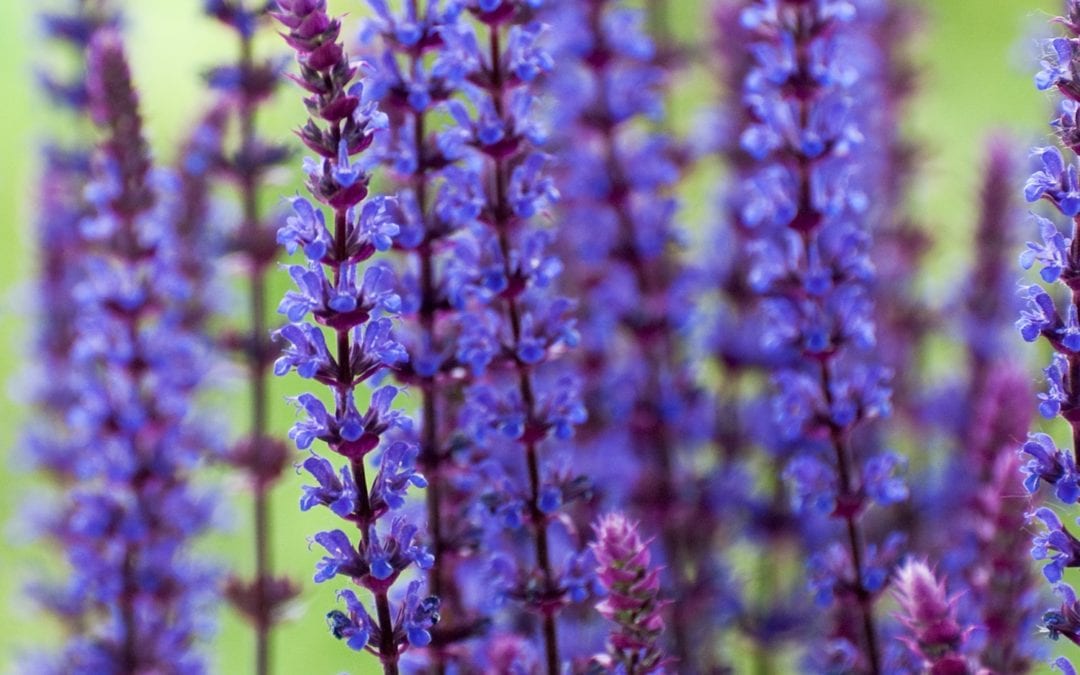Once we hit June, the kaleidoscopic colors of spring begin to give way to the more subtle greens of summer. Now is the time to experience your garden with senses other than sight. You can find the beauty of June by using your ears, nose and fingers. Grasses dance in the slightest breeze. Flowers tremble under the weight of a goldfinch. Leaves turn wrong side up at the whisper of an approaching thunderstorm. Try to fix these pictures in your mind’s eye so that you can re-experience them when gloomy winter weather starts to drag you down.
With nearly 11-inches since the first of March, we know the rain this spring has been plentiful, but please remember to water when the mid-summer brings drier weather. Those June, July and August rainstorms are notoriously spotty. Pay attention to the conditions in your own landscape. If a period of dry weather sets in, any tree or shrub planted in the last two years will need its roots soaked once a week. Perennial and annual borders will benefit from watering as well. And it’s a good idea to root-water even established trees and shrubs. Drought conditions can weaken a plant’s ability to fight off disease and pests, and can affect winter hardiness.
June is Perennial Gardening Month, but don’t make the mistake of putting all your eggs into spring’s basket. July’s floral delights are also abundant. If your garden starts to lack some flower power, add Garden Phlox, Liatris, Daylilies and Coneflowers. You can continue to plant perennials, shrubs and trees all summer as long as you pay attention to watering needs. Anything newly planted will need some baby-sitting as the temperatures begin to soar. So feel free to add some new color and texture to your borders.
You should finish up with the pruning of any spring-blooming shrubs soon. Trimming plants like Lilacs, Crabapples and Magnolias in the next week or two will allow flower buds to develop for spring 2018. And you can start to trim your evergreens as soon as the new needles begin to darken, usually around the end of the month. Go ahead and shear Yews, Boxwood, Arborvitae and Spruce in the next few weeks. Now that they are fully leafed out, you can do some minor trimming of most shade trees. Oaks are an exception though. Open wounds can attract the boring insects that carry Oak Wilt, so do not prune your Oaks until October.
Shear perennials and summer-flowering shrubs after their first flush of blossoms to encourage a second bloom. Coreopsis, Veronica and Salvia all respond beautifully to a good haircut. So do Spirea and Potentilla. You don’t have to prune stem by stem, unless you really want to. Grab a handful of stems and cut the whole bunch at once. They will quickly grow out and look natural in a few days. Shearing after blooming also keeps the plants from setting seed too early. This process takes a lot of energy and signals the start of dormancy in many species. For those perennials that re-seed a bit too vigorously, this is a must-do gardening chore, unless you relish weeding out unwanted seedlings later this summer.
And keep on weeding! Weeds can harbor insect pests like spider mites and white fly, as well as fungal diseases such as mildew. These are problems that can spread to many of your other plants. Weeds are also water hogs that steal moisture from your prized plants. Yes, we know that’s a lot to think about, but do just a little every few days and your garden will stay healthy all season long.


